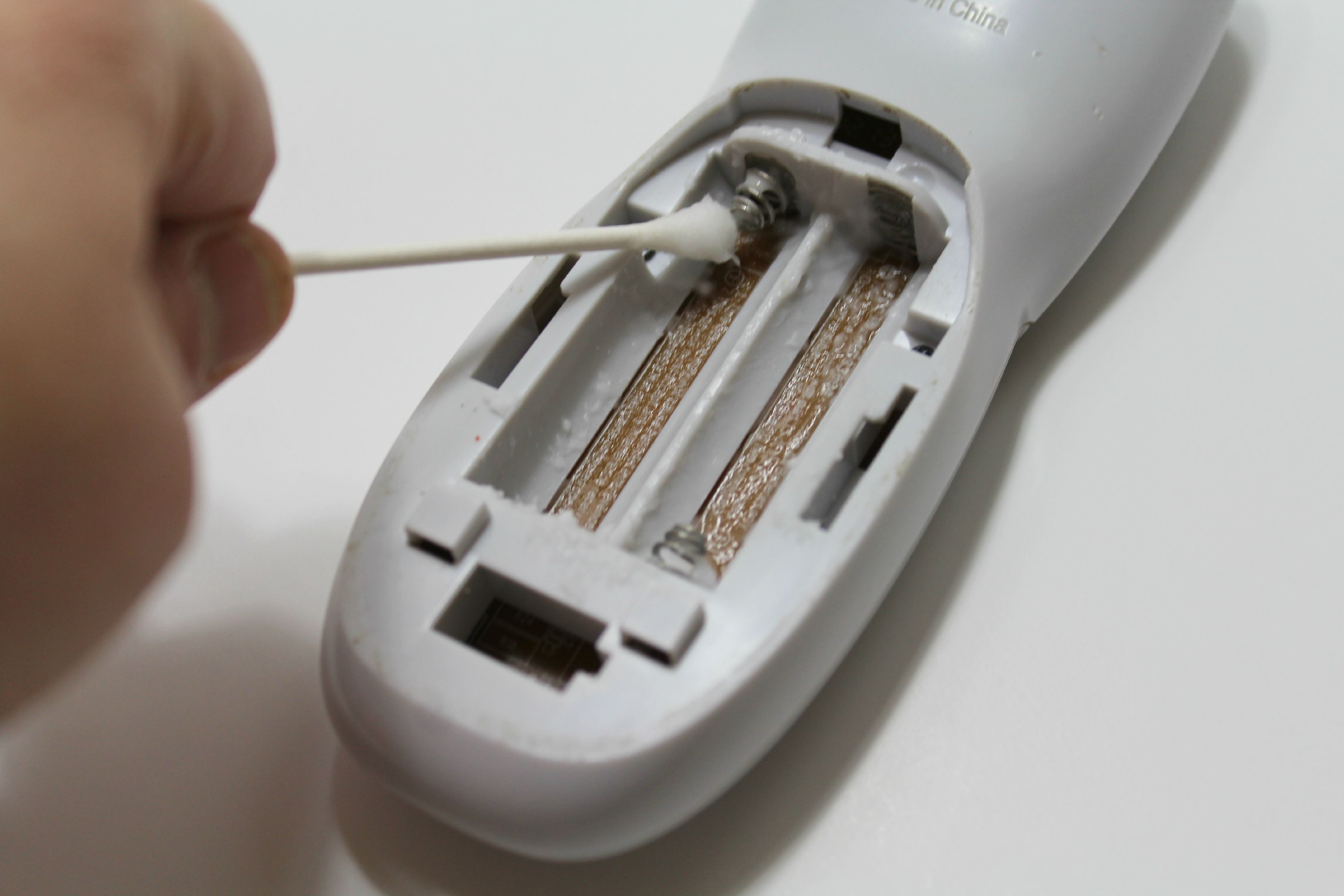To remove rust from a battery compartment, mix baking soda with water. Scrub the affected areas and rinse thoroughly.
Rust buildup in a battery compartment can hinder proper performance and lead to issues with connectivity. Fortunately, there are simple DIY methods to effectively remove rust. By following some easy steps, you can restore your battery compartment to its optimal condition.
This article will explore practical ways to eliminate rust from battery compartments, ensuring your devices remain in top working order. Whether it’s for a car battery or a handheld device, a rust-free compartment is essential for the longevity and performance of your electronics. Let’s delve into some easy and effective ways to tackle this common problem.
Identifying Rust In Battery Compartments
- Visible orange or reddish-brown deposits
- Corrosion on metal surfaces
- Powdery residue in the battery compartment
Potential Risks Of Rust
- Reduced battery performance
- Risk of electrical shortage
- Potential damage to electronic components

Credit: www.nytimes.com
Tools And Materials Needed
To effectively remove rust from a battery compartment, you will need to gather a few essential tools and materials. Below, we outline the basic tools, protective gear, and cleaning agents required for this task.
Basic Tools
- Bristle brush
- Microfiber cloth
- Small screwdriver
- Wire brush
Protective Gear And Cleaning Agents
- Gloves
- Safety goggles
- Vinegar
- Baking soda
Remember to wear gloves and safety goggles to protect your hands and eyes. Start by using a bristle brush to remove loose rust particles.
Next, mix vinegar and baking soda to create a paste. Apply the paste to the affected area using a microfiber cloth or small brush.
If the rust is stubborn, gently scrub the area with a wire brush while being careful not to damage the battery compartment.
Step-by-step Rust Removal Process
The battery compartment of your car is susceptible to rust due to moisture and exposure to the elements. Removing rust from the battery compartment is essential to prevent damage and ensure proper functioning of the battery. Let’s walk through the step-by-step process of removing rust from the battery compartment.
Safety Precautions
Before starting the rust removal process, it’s crucial to ensure your safety. Wear protective gloves and goggles to shield your skin and eyes from any chemicals or debris. Additionally, work in a well-ventilated area to avoid inhaling any fumes.
Thorough Cleaning And Rust Removal
The first step is to disconnect the battery and remove it from the compartment. Thoroughly clean the compartment with a mixture of baking soda and water using a brush or sponge to remove dirt, grime, and any loose rust particles.
Next, apply a rust remover solution to the affected areas. Allow the solution to sit for the duration recommended on the product label. Once the rust remover has had time to work, use a wire brush or sandpaper to gently scrub away the rust from the metal surfaces.
- After scrubbing, rinse the compartment with clean water to remove any remaining rust particles and residue from the rust remover solution.
- Dry the area thoroughly with a clean cloth or towel.
- To prevent future rust formation, apply a rust inhibitor or rust-resistant paint to the clean, dry metal surfaces of the battery compartment.
Finally, allow the compartment to dry completely before reinstalling the battery and reconnecting it. Regular maintenance and keeping the compartment clean can prevent rust from reoccurring.

Credit: www.reddit.com
Preventative Measures For Future Rust Formation
To prevent future rust formation, it’s important to regularly clean and inspect the battery compartment. Use a wire brush or sandpaper to remove any existing rust, and then apply a rust-inhibiting primer and paint. Additionally, consider using a battery terminal protector to prevent corrosion.
Regular maintenance is key to keeping rust at bay.
Rust formation in the battery compartment can lead to electrical issues and potential damage to the battery. To avoid future rust problems, it is crucial to take preventative measures. Implementing practices such as the application of rust inhibitors, as well as regular maintenance routines, can help protect your battery compartment from rust.
Application Of Rust Inhibitors
Applying rust inhibitors is an effective way to prevent rust formation in the battery compartment. These inhibitors create a protective layer on the metal surface, hindering the interaction between moisture and metal, thus reducing the chances of rust formation. Here’s how you can apply rust inhibitors:
- Clean the battery compartment thoroughly before applying the rust inhibitor.
- Ensure that the surface is dry and free from any dirt or debris.
- Apply the rust inhibitor evenly on the metal surface, making sure to cover all areas susceptible to rust.
- Allow the product to dry completely before reinstalling the battery.
Regular maintenance practices can also play a significant role in preventing rust formation in the battery compartment. Here are some maintenance tips to keep in mind:
Regular Maintenance Practices
- Inspect the battery compartment periodically for any signs of rust or corrosion.
- If any rust is detected, clean the affected areas using a rust remover or a mixture of baking soda and water.
- Thoroughly dry the compartment after cleaning to prevent moisture buildup.
- Consider applying a thin layer of petroleum jelly or dielectric grease to the battery contacts to provide additional protection against rust.
- Ensure the battery is securely fastened in the compartment to minimize movement, which can lead to wear and rust formation.
By following these preventative measures and incorporating regular maintenance practices into your battery care routine, you can significantly reduce the risk of rust formation in the battery compartment. Protecting your battery from rust will not only extend its lifespan but also ensure its optimal performance.
Professional Help And Maintenance Services
If you’re struggling with rust in your battery compartment or simply want to ensure its proper maintenance, seeking professional help and regular inspections are essential. Knowing when to seek professional assistance and the importance of regular inspections can prevent further damage and prolong the lifespan of your battery. While DIY options can work in some cases, it’s often best to rely on experts for a thorough and effective solution. Let’s delve into the details.
When To Seek Professional Assistance
While some battery compartment rust can be handled with DIY solutions, others may require professional intervention. Here are a few instances when seeking professional assistance becomes necessary:
- If the rust is extensive and covers a large part of the battery compartment, professional help is recommended. Attempting to remove heavy rust without proper equipment and expertise might lead to more harm than good.
- If the rust has caused substantial damage to the battery terminals or wires, it’s crucial to consult an expert. They have the necessary tools and knowledge to assess and repair any potential electrical issues.
- When you lack experience or confidence in handling battery-related matters, opting for professional assistance is always a smart choice. Experts possess the skills and proficiency to tackle rust removal efficiently, reducing the risk of any harm.
Importance Of Regular Inspections
Regular inspections are key to maintaining a rust-free and functional battery compartment. Here’s why they matter:
- Early detection of rust allows for timely interventions, preventing it from spreading and causing further damage.
- Regular inspections identify other potential issues, such as loose connections or corrosion, which may impact battery performance.
- By addressing any signs of rust or deterioration promptly, you can extend the lifespan of your battery and avoid unexpected power failures.
- Professional inspection services provide a comprehensive evaluation of your battery compartment, ensuring that all necessary repairs or maintenance tasks are taken care of.
By staying proactive and seeking professional assistance when needed, you can address rust-related concerns and keep your battery compartment in optimal condition. Don’t underestimate the importance of regular inspections! They play a crucial role in preventing future problems and ensuring the smooth functioning of your battery.

Credit: thirtysomethingsupermom.com
Frequently Asked Questions For How To Remove Rust From Battery Compartment
How Can I Remove Rust From The Battery Compartment?
To remove rust from the battery compartment, start by disconnecting the battery and cleaning any loose rust with a wire brush. Then, apply a rust remover or a mixture of vinegar and baking soda. Scrub the affected area, rinse with water, and dry thoroughly before reconnecting the battery.
Regular maintenance can help prevent future rust buildup.
Is It Safe To Use Baking Soda To Remove Rust From The Battery Compartment?
Yes, baking soda is a safe and effective option to remove rust from the battery compartment. Mix a small amount of baking soda with water to form a paste, then apply it to the rusted area. Use a clean cloth or brush to scrub the rust away.
Baking soda is a mild abrasive that helps remove rust without damaging the battery compartment.
Can I Prevent Rust In The Battery Compartment?
Yes, you can prevent rust in the battery compartment by keeping it clean and dry. Regularly inspect the compartment for any signs of rust or corrosion. If you find any, remove it promptly to prevent further damage. Applying a thin layer of petroleum jelly or using a battery terminal protector can also help prevent rust and corrosion.
Conclusion
Lastly, it’s important to regularly inspect and clean the battery compartment to prevent rust formation. By following the simple steps outlined in this blog, you can easily remove rust and ensure your battery compartment remains in good condition. Regular maintenance will help extend the life of your battery and prevent potential electrical issues.


